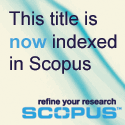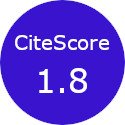Application of Second Order Coupled Lucas Sequence
Abstract
Fibonacci numbers and polynomials have been widely studied due to their importance in mathematics, physics, and business. The Coupled Fibonacci Sequence (CFS) and Multiplicative Coupled Fibonacci Sequence (MCFS) contain useful identities but depend on previous terms for computation. The Lucas Sequence (LS) also displays notable properties in number theory. This study investigates the second-order Coupled Lucas Sequence (CLS), in which two interdependent sequences evolve in tandem. Through mathematical analysis and simulations, we uncover patterns, periodicities, and structural relationships within the sequence. Additionally, the research explores its promising applications in cryptography, optimization, and algorithm design. A deeper understanding of CLS enhances number theory and offers insights into broader mathematical systems. This study contributes to mathematical research by revealing intricate connections between sequences and emphasizing the elegance and utility of coupled sequences across disciplines.



